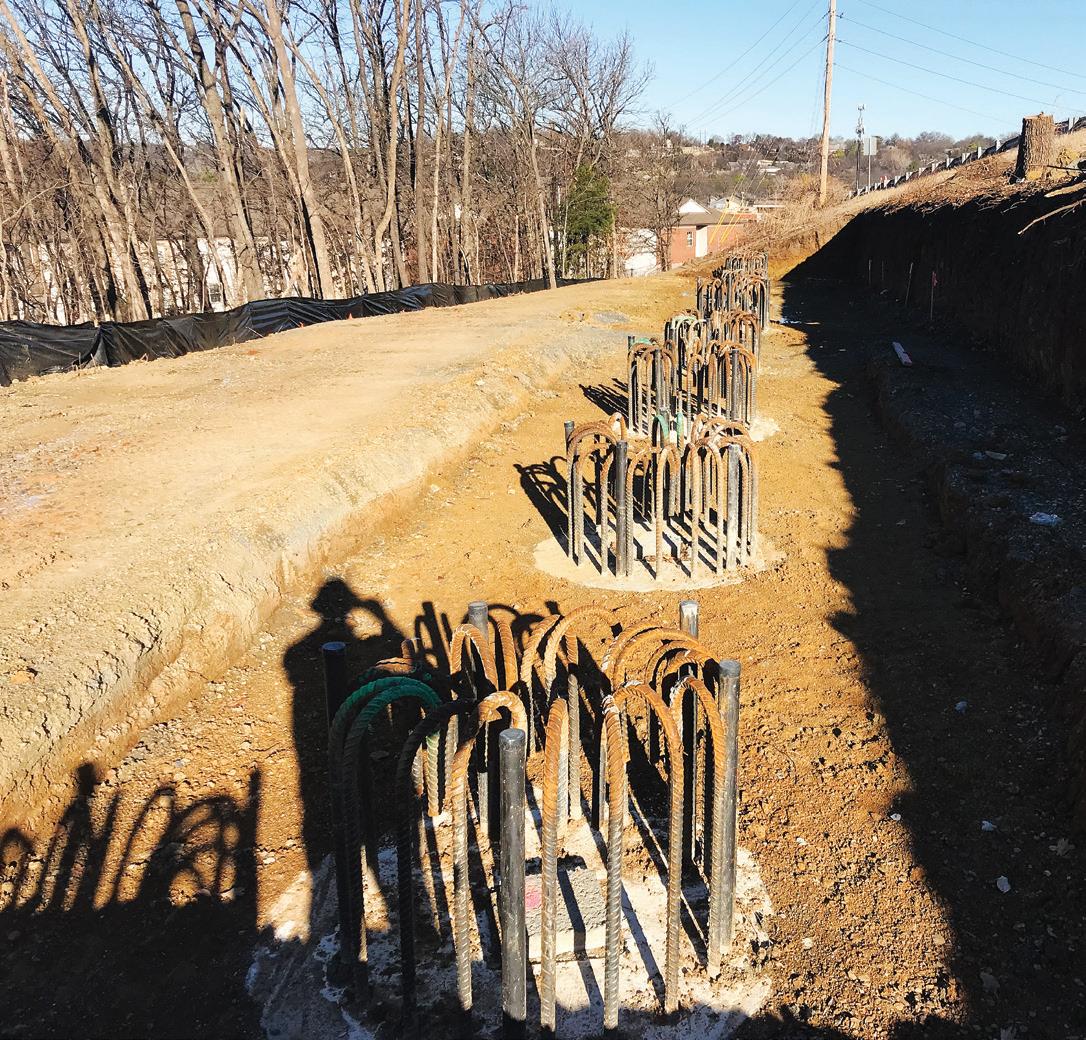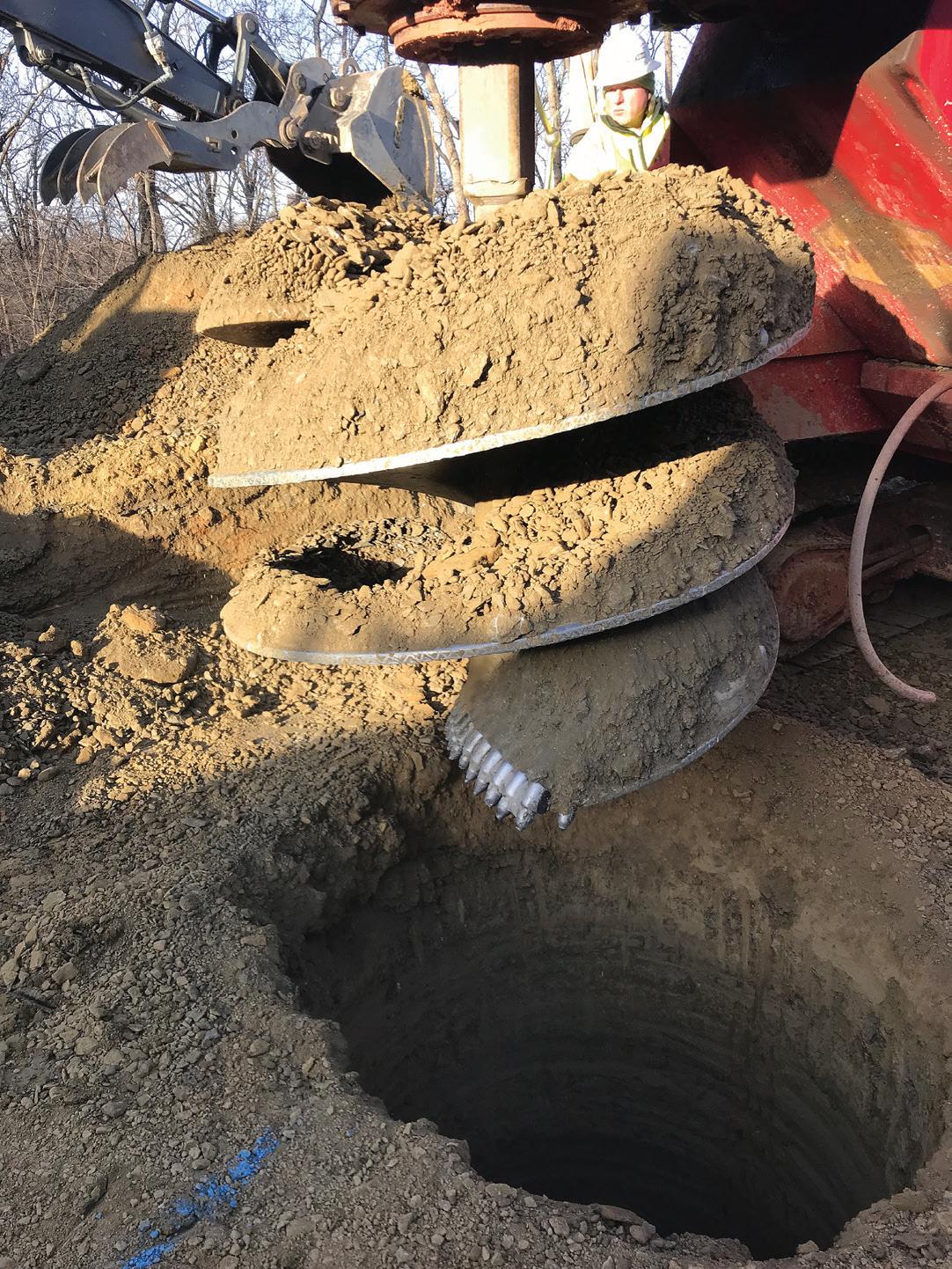
4 minute read
Streets, Highways
The foundation for a retaining wall takes shape along Yale Avenue between 81st and 91st streets in Tulsa, Okla. This street widening project will expand the two-lane stretch of road to six lanes, flatten and straighten the hilly, twisty segment that has been the site of 177 collisions between 20042012. (Photo provided by city of Tulsa)
Go with the flow: Tulsa street-widening project to improve dangerous stretch of road
By JULIE YOUNG | The Municipal
With so many communities embarking on “road diets” to calm traffic and increase the safety of everyone who uses them, it can be controversial when a city opts to widen a road to accomplish the same thing. However, that is the goal of the $29 million Yale Avenue street-widening project that the city of Tulsa, Okla., began last fall.
The project, which is the most expensive street project in the city’s history, will widen, straighten, flatten and reinforce the twisting, hilly stretch of Yale Avenue between 81st and 91st streets that is considered one of the most dangerous in the city. It serves approximately 31,300 vehicles per day (2017) plus about 17,000 vehicles per day near the turnpike located 1 mile south of the segment. It has seen 177 collisions between 2004 and 2012, and officials say there have been countless near misses. In fact, most locals think twice before driving along the two-lane road just after a light rain or during heavy traffic, and the defenses that are currently in place are no longer adequate.
According to Tulsa city engineer Paul Zachary, this road segment is the only portion of the corridor connecting the Creek Turnpike

Piers form the base of the retaining wall. (Photo provided by city of Tulsa)
(State Highway 364) to I-44 that has not been improved and expanded to six lanes, so it was not a radical idea to make this decision. It was a practical one.
“It was its turn,” he said.
A comprehensive plan
Zachary said Tulsa first considered this project back in 1997, but it took a while to bring it to fruition. City officials needed to discuss the overall road system and intersections that needed to be improved, then determine which elements should be prioritized.
“The allocations for widening in a funding package are usually limited to approximately three road segments and some intersection work,” he said. “With the increased focus on transportation along with increased funding put forth by the elected officials (and approved by voters in 2008, 2014 and 2019), we have been able to perform some long-needed improvements including: street conditions, congestion, reconstruction, widening, multimodal and ADA (updates.)”
To accomplish the Herculean task, Tulsa had to coordinate with private utility owners so that they could relocate infrastructure in advance of the project. The exception to this was the Public Service Company of Oklahoma, whose situation required a phased relocation in tandem with the project’s progress. The city also plans to install a new 12-inch water main with 8-inch laterals into neighborhoods as well as two new storm sewer systems on the north and south slopes designed to convey the one percent chance of a flood.
As for the cosmetic changes, Zachary said medians, sidewalks and landscaping, and a complex system of retaining walls was devised, which allowed for connection of large elevation differentials without invasive grass slopes. Finally, 85th Street will be relocated several lots to the south while a retaining wall will replace its original position. That location also represents the greatest vertical change in the Drilling along Yale Avenue will provide for expansive improvements that will make the road segment safer for travelers. (Photo provided by city of Tulsa)

roadway profile. The point will be dropped approximately 12 feet as part of the effort to flatten curves to give drivers a longer view of the street. This will allow them to assess traffic conditions and adjust their navigation accordingly. The project is on track to be completed in fall 2023.
Public benefit
Zachary said once the street is widened and improved, he expects to see an increase in vehicular activity along Yale Avenue. The curves, low speeds, and sight distances have deterred many from driving along the one-mile stretch.
“With the new lanes and safer road section, increased traffic volumes can be accommodated without adversely impacting the adjacent neighborhoods,” he said. “Now multimodal transportation can occur through this mile-segment versus being an obstacle to it.”
Construction manager Elliott Stiles said since work began on the project, he’s heard mostly positive comments from citizens who live and do business in the corridor.
“I have received multiple comments alluding to the high level of professionalism from our contractor and staff working on site,” he said. “Many have expressed excitement about the various improvements and are eager to see the finished product.”










